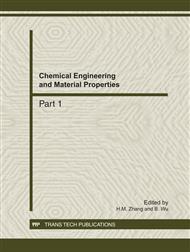p.1041
p.1047
p.1051
p.1055
p.1059
p.1064
p.1069
p.1075
p.1080
The Development of Poplin which Release Anion
Abstract:
This article discussed the development process and anion release mechanism of anion printing poplin. Through ultra-fine processing and special modification, 6-ring stone and a variety of functional materials were used to process anion additives. The particle size of anion additives is 50-900 nm. Mix the additive and other additives, then modulation into sizing agent. Through experiments and instruments test, the poplin which obtained by an ordinary printing process, is proved has higher wear behavior. At the same time, the poplin can stable and lasting release anion reached 3000/cm3, reach people's health requirements
Info:
Periodical:
Pages:
1059-1063
Citation:
Online since:
December 2011
Authors:
Keywords:
Price:
Сopyright:
© 2012 Trans Tech Publications Ltd. All Rights Reserved
Share:
Citation:


